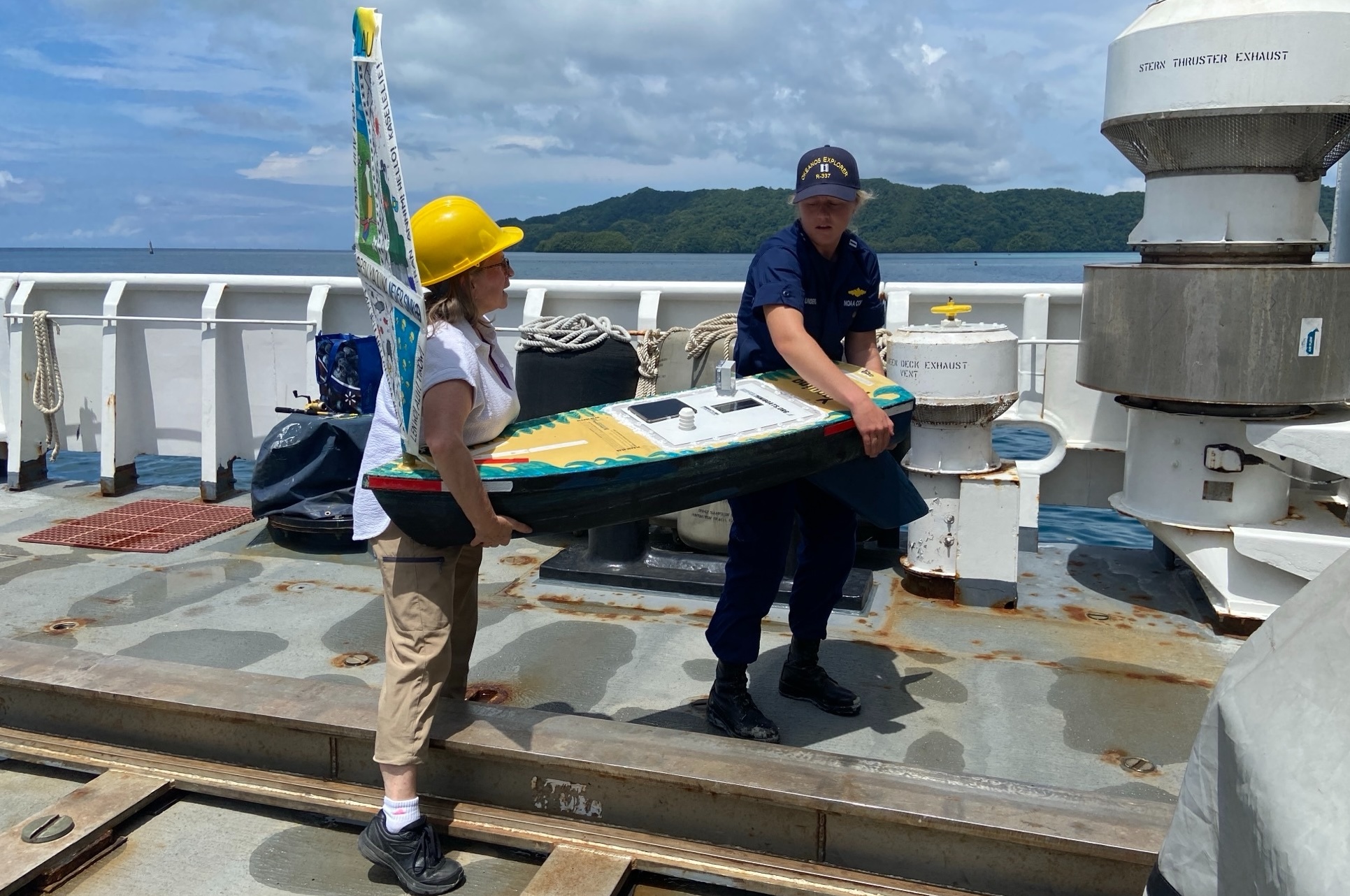
By DANA TIMS/Lincoln Chronicle
A small sailboat built by a group of Lincoln County students last year is off once again on its record-breaking journey after washing up in May on the northern Palau Island of Kayangel in the South Pacific.
The five-foot-long boat, dubbed the RSV Yaquina Neversink, required only a new set of sensors and a resealed hatch after its journey of more than 10,125 miles and 240 days after its September 2024 launch from a research vessel off the Oregon coast.
“It’s truly been a fantastic journey,” Kama Almasi, director of the Oregon Coast STEM Hub, which is one branch of the Oregon Sea Grant educational programs, told Lincoln Chronicle. “But it’s now ready to be relaunched and it’s really anyone’s guess where it will go from here.”
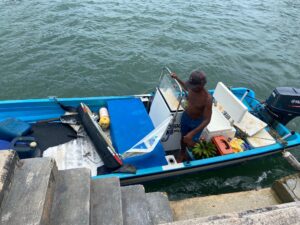
Almasi, using private donations, flew to Palau on July 13 after learning the Neversink had washed up on the remote island after an adventure that took it down the West Coast, toward Hawaii, north again and finally, west to its landing point on what is, fortuitously, the only inhabited islet of Palau’s Kayangel Atoll.
It is now aboard the Okeanos Explorer, a National Oceanic and Atmospheric Administration vessel that was already in the area to map the ocean floor. The NOAA crew is expected to lift the Neversink into the water this weekend, where prevailing winds will once again determine where the non-motorized boat travels.
And with each new nautical mile, the Neversink will continue its record-setting ways.
“Its transit from Oregon to Palau make this miniboat the longest-traveled boat we have ever had,” said Cassie Stymiest, whose New Hampshire-based non-profit Educational Passages has overseen the launch of more than 210 other boats since 2008. “It’s actually longer than the world record of bluefin tuna migrations.”
By a long way, in fact.
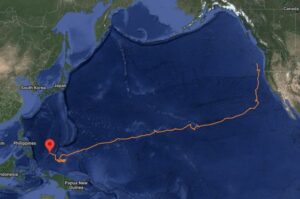
Young Pacific bluefin tuna, which can reach swimming speeds exceeding 50 mph, migrate more than 5,000 miles from spawning grounds in the Sea of Japan to the California coast. That feat is regarded as one of the longest migratory feats among all sea-going creatures.
Upon landing in Palau on May 19, however, it was determined that the Neversink not only set a record for a new country reached by Educational Passage’s boat program, but it was also confirmed that the voyage is the farthest GPS-tracked linear distance of a mini-boat ever recorded.
“We’ve had lots of fun following the statistics,” Stymiest said. “This boat has just been amazing.”
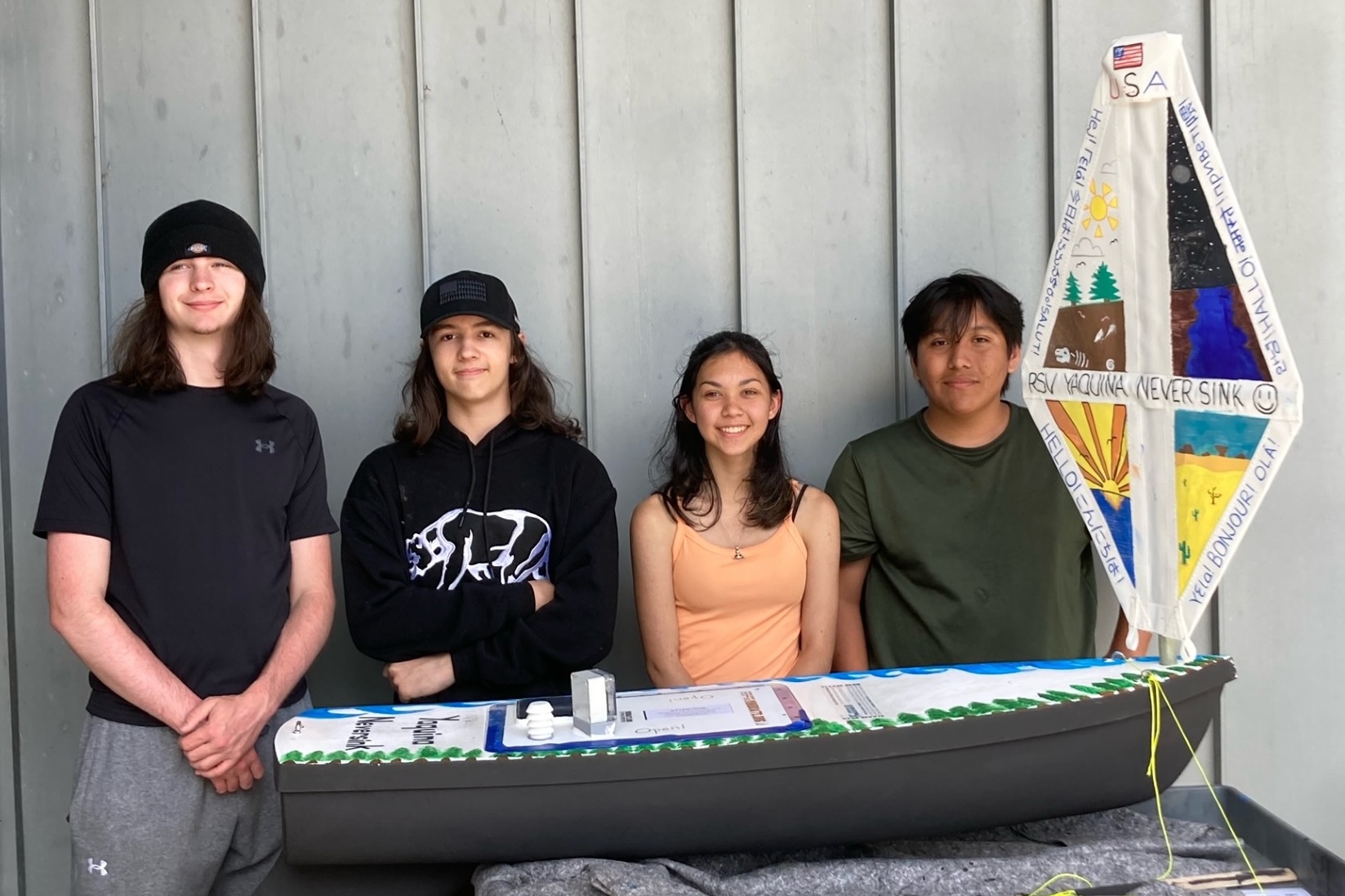
The ocean as educator
The idea to build a mini-boat came from Tracy Crews, the Yachats resident who serves as Oregon Sea Grant’s associate director of education. She also helped launch and lead the Oregon Coast STEM Hub, which is one of 13 state-funded partnerships aimed at increasing students’ skills in science, technology, engineering and math.
A group of about one dozen Lincoln County students, with a core of five or so eventually leading the Neversink project, signed up last year for of one of the many summer learning experiences.
Under the tutelage of Almasi and volunteer Rick Peters, a retired robotics engineering instructor who also lives in Yachats, the students spent weeks on the boat’s fiberglass keel, which needed ballasting and attaching. Three coats of “anti-fouling” paint were applied to help the Neversink weather the punishing marine environment.
Finally, students attached the small mast that allows the craft to ride the wind wherever it takes it.
The onboard electronics package, which had stopped operating not long before the Neversink washed ashore in Palau, includes a GPS transmitter, which allows anyone in the world with access to a computer to track its progress in real time. It also features sensors measuring air and water temperature, as well as orientation.
In needing to install a new sensor package herself, Almasi said she faced a considerably steep learning curve because that was the only part of the construction in Newport she did not handle.
“That was all Rick’s part,” she said. “But both Cassie and Rick texted me answers to my questions and it all went very smoothly.”
Setting sail
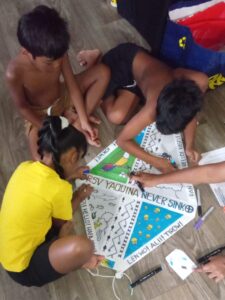
One new feature on the relaunched Neversink is a sail that was painted by Palauan students to carry themes of their island nation. It includes, for instance, colorful images of the Palau fruit dove, which is endemic to Palau and is Palau’s national bird.
“The traditional art on the frame are of fish, clam, and stone money, with fish symbolizing unity, clam symbolizing (the) history of Palau and sustenance, and stone money depicting strength of the Palauan community as a whole,” Brynn Demei, a chief at the Bureau of Curriculum and Instruction in Palau, wrote in an email. “I wanted the sail to resemble Palau in all its beauty, grace, strength, conservation and preservation all at the same time.”
The students also added greetings on the sides of the Neversink from different island nations in the Pacific, mostly those near Palau, she added.
Peters, for his part, remains impressed that the mini-boat has survived this long virtually intact.
“It could have gotten run over out there, and it’s very easy to break up onshore,” he said. “None of that happened. It kind of just kept tootling along.”
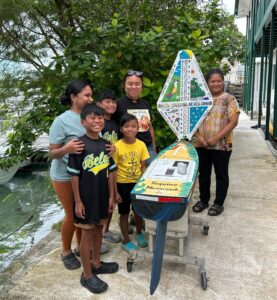
Now, a shortage of data about ocean currents and prevailing winds in the area of the relaunch means that predicting the Neversink’s next journey will be difficult, Almasi said.
“We’ll have to see what happens,” she said. “It’s close to the equator. Four and 4.5 degrees north latitude is an area called the Doldrums. The winds there are really low and sometimes stop. The currents may go in one direction and the winds in another. Which is all to say that we’re not quite sure what will happen.”
The Doldrums, in fact, hold a special spot in maritime history, having carved out a reputation as a potentially lethal zone which could not only strand ships for weeks on end, but cause them to run out of food and water in the process.
The little boat that could, however, has never sunk, and any bet against the Neversink making nothing but more history is likely a losing one.
- Dana Tims is an Oregon freelance writer who contributes regularly to Lincoln Chronicle and can be reached at DanaTims24@gmail.com





















This is totally awesome! This little boat has connected with another human community merely by its presence. The students from both here and Palau show the same enthusiasm and excitement for this small craft. It’s heartwarming to witness during this time. Great article!